Gloves come in many styles and types, each designed for a specific purpose. They serve as protection, tools, or fashion accessories depending on the need. Understanding the different types helps people choose the right gloves for their tasks or occasions.
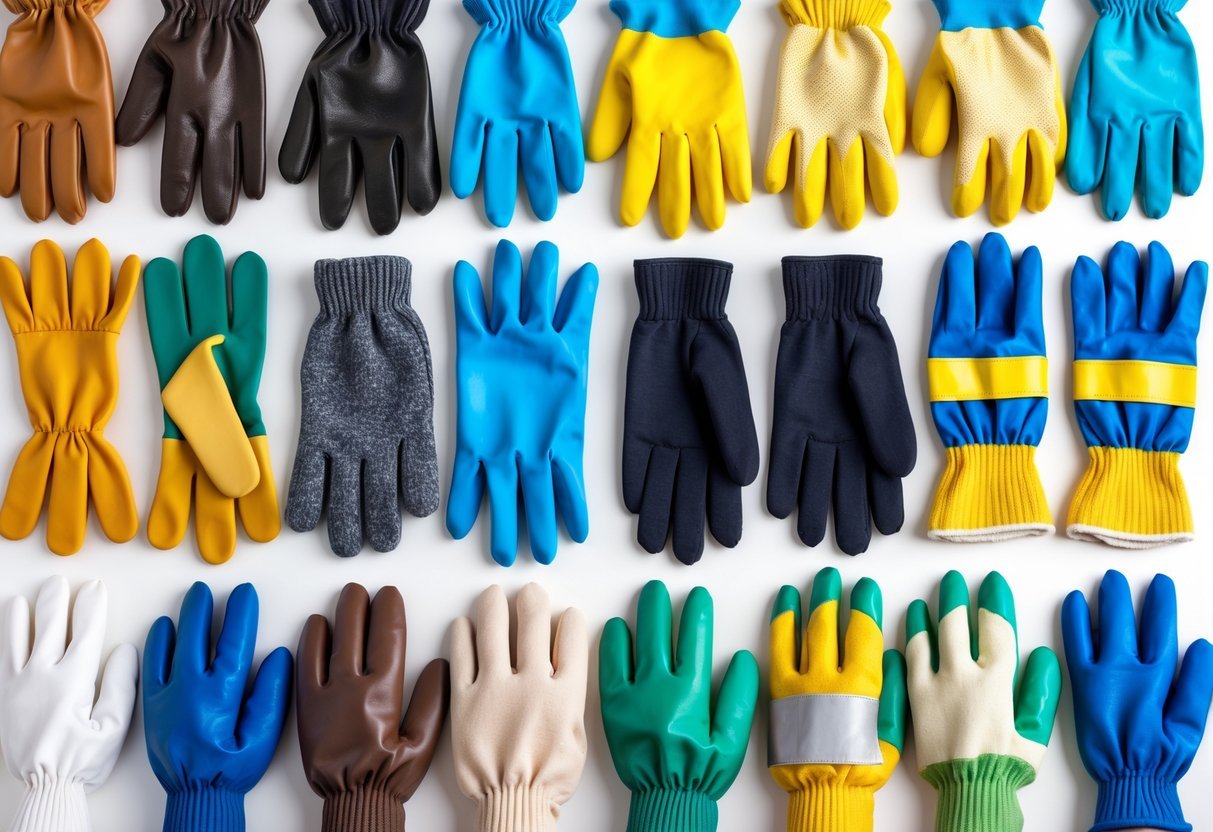
Different gloves offer unique features that match particular activities, environments, or safety requirements. This variety means gloves can be found in workplaces, sports, medical settings, and everyday life. Knowing about these options can help people find the best fit for comfort, function, and protection.
1) Latex Gloves
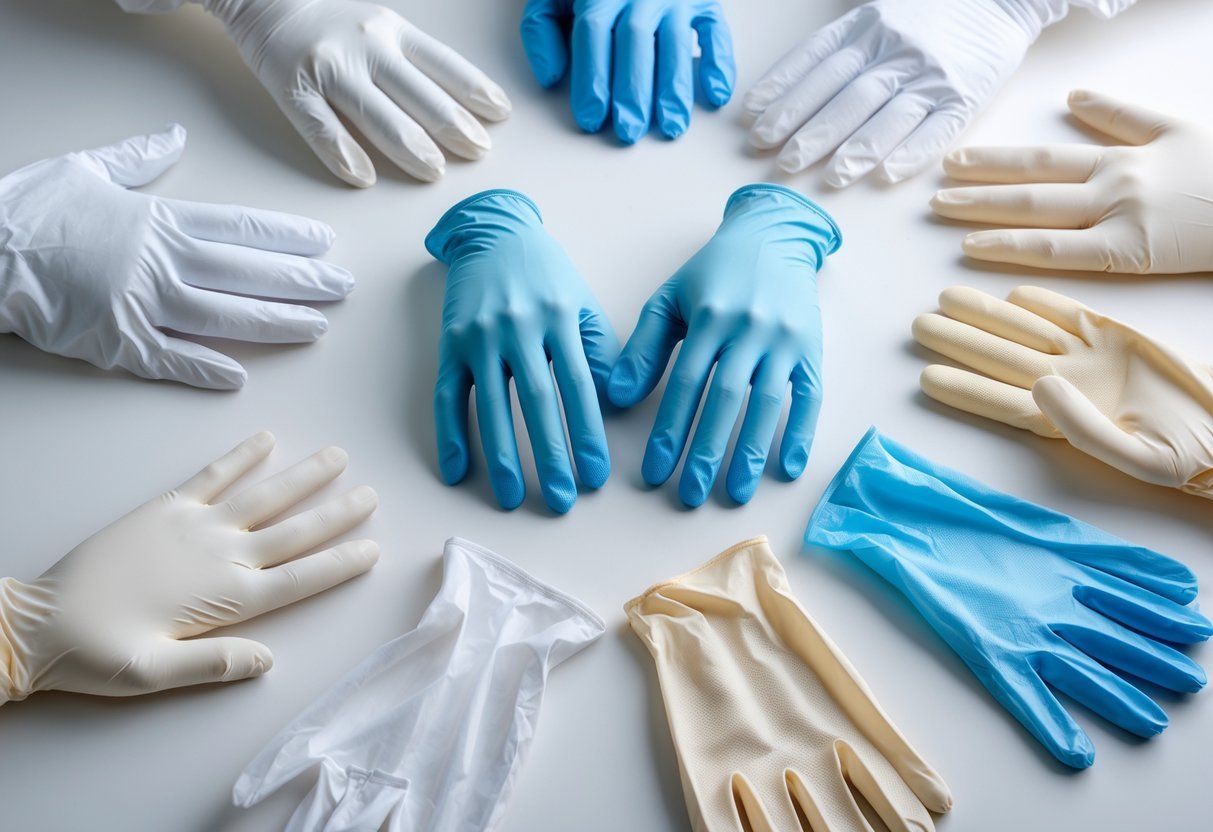
Latex gloves are made from natural rubber harvested from rubber trees. They are known for being elastic, comfortable, and fitting tightly to the hand. This makes them a popular choice for tasks that need good touch sensitivity.
These gloves protect against biological hazards, including bacteria and viruses. They also block water-based substances well, which is why they are widely used in healthcare and food handling.
However, latex gloves can cause allergic reactions in some people. They also offer limited protection against strong chemicals and organic solvents. For these reasons, they are not always suitable for industrial use.
Latex gloves are biodegradable, which makes them more environmentally friendly than some synthetic options. They come in various types, including powdered and powder-free versions, depending on the specific need.
2) Nitrile Gloves

Nitrile gloves are made from synthetic rubber. They offer strong resistance to chemicals, oils, and punctures. This makes them suitable for many industries, including healthcare, food handling, and cleaning.
They are a popular choice because they do not contain latex. This reduces the risk of allergic reactions. Nitrile gloves also provide good flexibility and comfort, allowing users to wear them for extended periods.
These gloves come in different thicknesses. Thicker gloves generally provide better protection but may reduce dexterity. Many nitrile gloves are also designed to be durable and flexible, balancing safety and ease of use.
Some nitrile gloves meet specific safety standards for different tasks. It is important to check certifications to ensure they fit the needs of a particular job. Eco-friendly options are also available, which aim to reduce environmental impact.
Overall, nitrile gloves are valued for their chemical resistance, durability, and hypoallergenic properties. They serve as a reliable protective tool in many work environments.
3) Vinyl Gloves
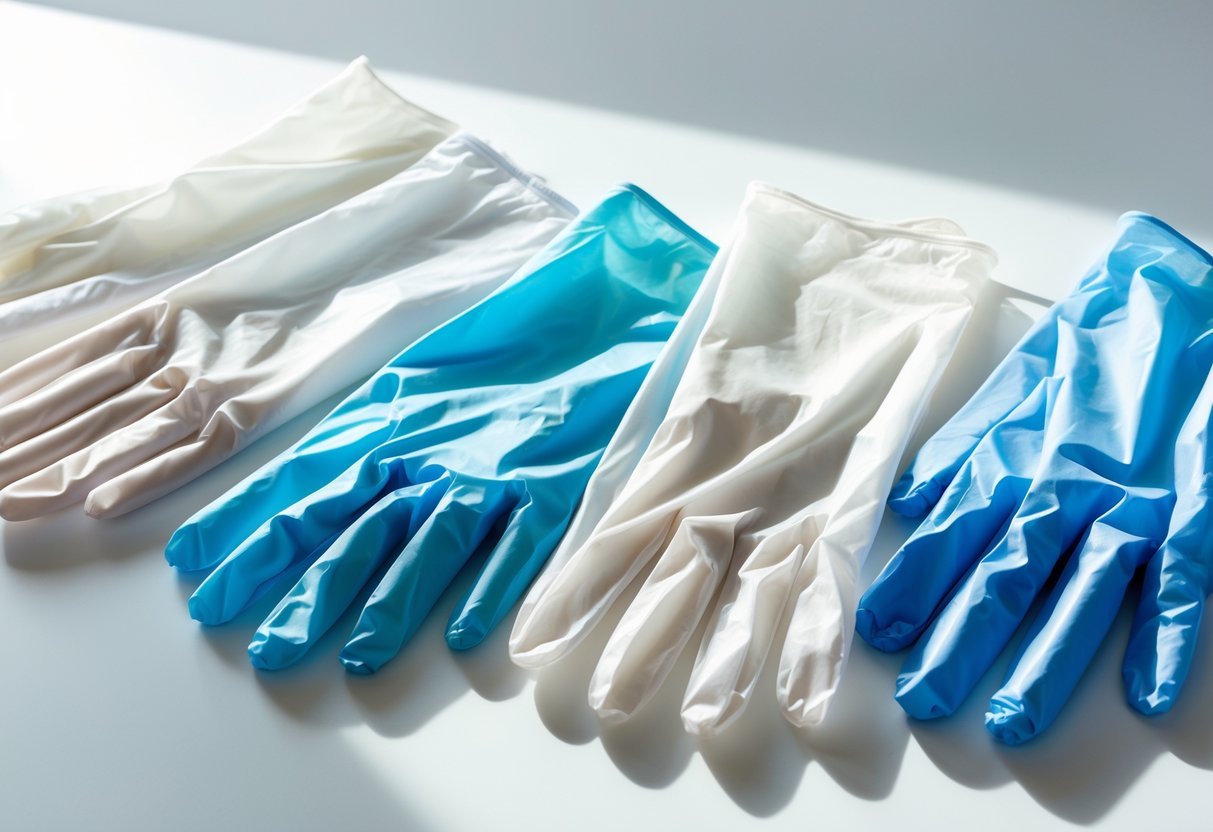
Vinyl gloves are made from polyvinyl chloride (PVC), making them a popular choice for many tasks. They are latex-free, which helps reduce allergic reactions.
These gloves offer a loose, comfortable fit. They are less flexible than latex or nitrile but still provide enough protection for low-risk jobs.
Vinyl gloves are commonly used in food handling, cleaning, and some healthcare settings. They work well for short-term tasks that don’t require high durability or precision.
Compared to nitrile and latex gloves, vinyl gloves are usually less expensive. However, they are not as resistant to chemicals or punctures.
Their main advantage is affordability and ease of use for tasks where high protection is not critical. They are a practical choice for environments that need basic hygiene and safety measures.
4) Leather Work Gloves

Leather work gloves are popular for their durability and protection. They offer good resistance against abrasion, fire, and friction, making them suitable for tough jobs.
Common types of leather used include cowhide, pigskin, and goatskin. Cowhide is thick and strong, often used in gloves that need to last long and protect during winter. It is heavier than other leathers but offers good durability.
Pigskin gloves are softer and more flexible. They are often preferred for tasks that require better hand movement. Goatskin offers a balance of softness and toughness, giving good comfort and protection.
Leather work gloves vary in quality, grade, and design. These factors affect comfort, fit, and protection level. Workers should choose based on the type of job and the kind of protection needed.
5) Cut-Resistant Gloves

Cut-resistant gloves are designed to protect hands from cuts and sharp objects. They are commonly used in workplaces where tools, blades, or sharp materials are handled regularly. These gloves reduce the chance of injuries like cuts and lacerations.
Different materials make cut-resistant gloves effective. Common materials include Kevlar, steel fiber, and high-performance polyethylene. The choice of material depends on the level of protection needed and the type of work being done.
Cut-resistant gloves are rated by standards such as ANSI/ISEA 105. These ratings range from low to high cut resistance. Workers can select gloves based on the specific risks they face at their job.
These gloves are useful in many industries. Food processing, manufacturing, construction, and mining often require cut-resistant gloves. They help workers stay safe while handling knives, glass, or metal parts.
Many cut-resistant gloves also feature coatings to improve grip or comfort. Coatings like nitrile or polyurethane can protect against moisture and improve durability. This makes them suitable for different work environments.
6) Chemotherapy Gloves

Chemotherapy gloves are special medical gloves designed to protect healthcare workers and patients from harmful chemotherapy drugs. These gloves help prevent skin contact with toxic substances during cancer treatment.
The most common material for chemotherapy gloves is nitrile. Nitrile gloves offer strong resistance to chemicals and are durable. Latex gloves are also used but may cause allergies in some people. Vinyl gloves are not recommended because they allow chemicals to pass through easily.
To increase safety, it is common to wear two pairs of gloves at the same time. Double gloving reduces the chance of exposure if one glove is damaged. Gloves used for chemotherapy must meet specific standards, such as ASTM D6978, to ensure they block harmful drugs effectively.
Changing gloves often and using thicker gloves can provide better protection during long exposure. Chemotherapy gloves are single-use and should be discarded after each task to prevent contamination.
7) Disposable Polyethylene Gloves

Disposable polyethylene gloves are made from a thin plastic material called polyethylene. They are often used in food service and basic cleaning tasks. These gloves are lightweight and provide a loose fit.
They are among the most affordable options for disposable gloves. Because of their low cost, they are popular for large-scale, low-risk uses. However, they do not offer strong durability or protection.
Polyethylene gloves do not resist oils or chemicals well. This makes them unsuitable for greasy or hazardous environments. They are best for short-term, light-duty tasks where high protection is not needed.
While they lack the stretch and comfort of other materials like latex or nitrile, polyethylene gloves serve well when quick glove changes are necessary. Their simple design makes it easy to put on and remove gloves fast, which can be useful in food handling.
8) Winter Thermal Gloves
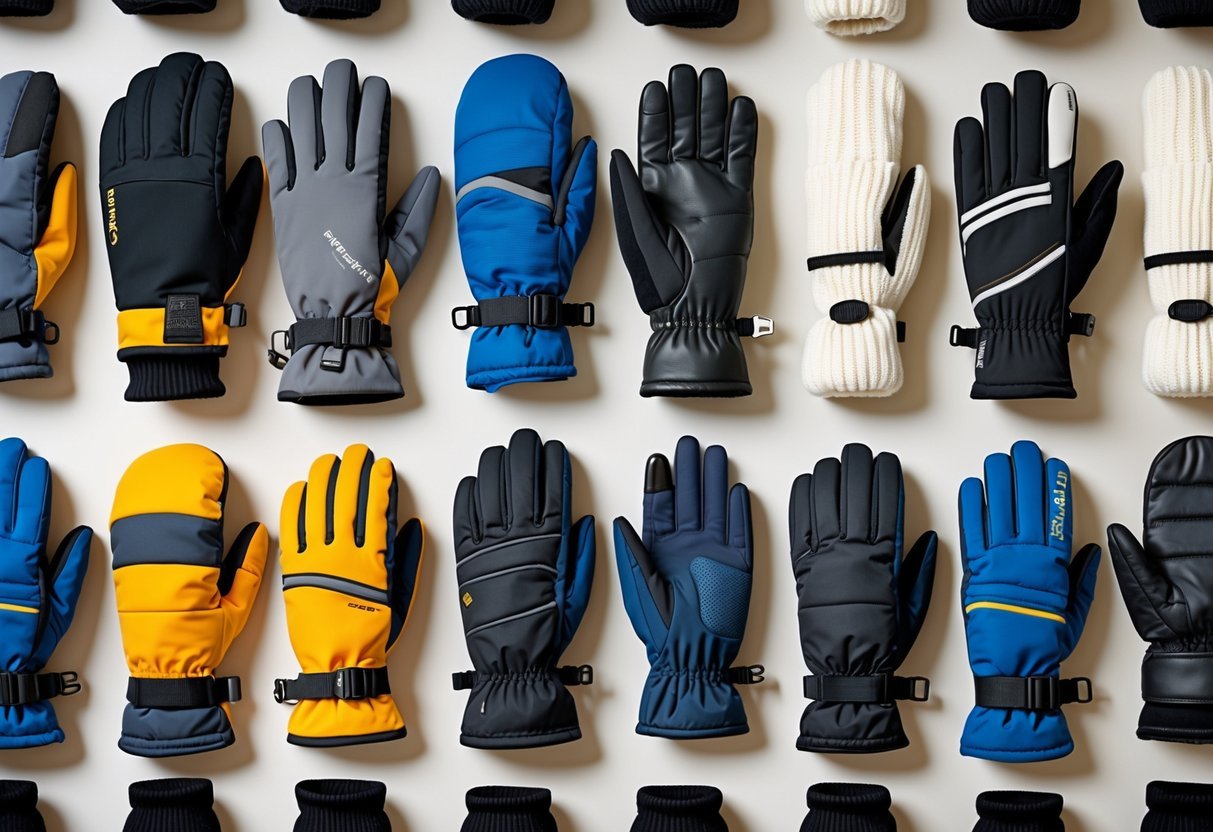
Winter thermal gloves are designed to keep hands warm in cold temperatures. They use materials that trap heat while allowing moisture to escape. These gloves are important for anyone spending time outside in winter.
Many thermal gloves have insulation made from synthetic fibers or natural materials like wool. This layer helps hold in body heat. Some gloves also use fleece or acrylic for softness and extra warmth.
The fit of thermal gloves is important. Gloves that are too tight can reduce circulation, making hands colder. Gloves that are too loose might let cold air inside. Proper sizing ensures better comfort and heat retention.
Different types of winter thermal gloves suit different activities. Some have strong grip and durability for tasks like hiking or snowboarding. Others focus on flexibility and dexterity for everyday use or touchscreen use.
Caring for thermal gloves can extend their life. Washing them gently and storing them in a dry place helps keep insulation effective. Proper maintenance ensures hands stay warm over many winters.
9) Motorcycle Gloves
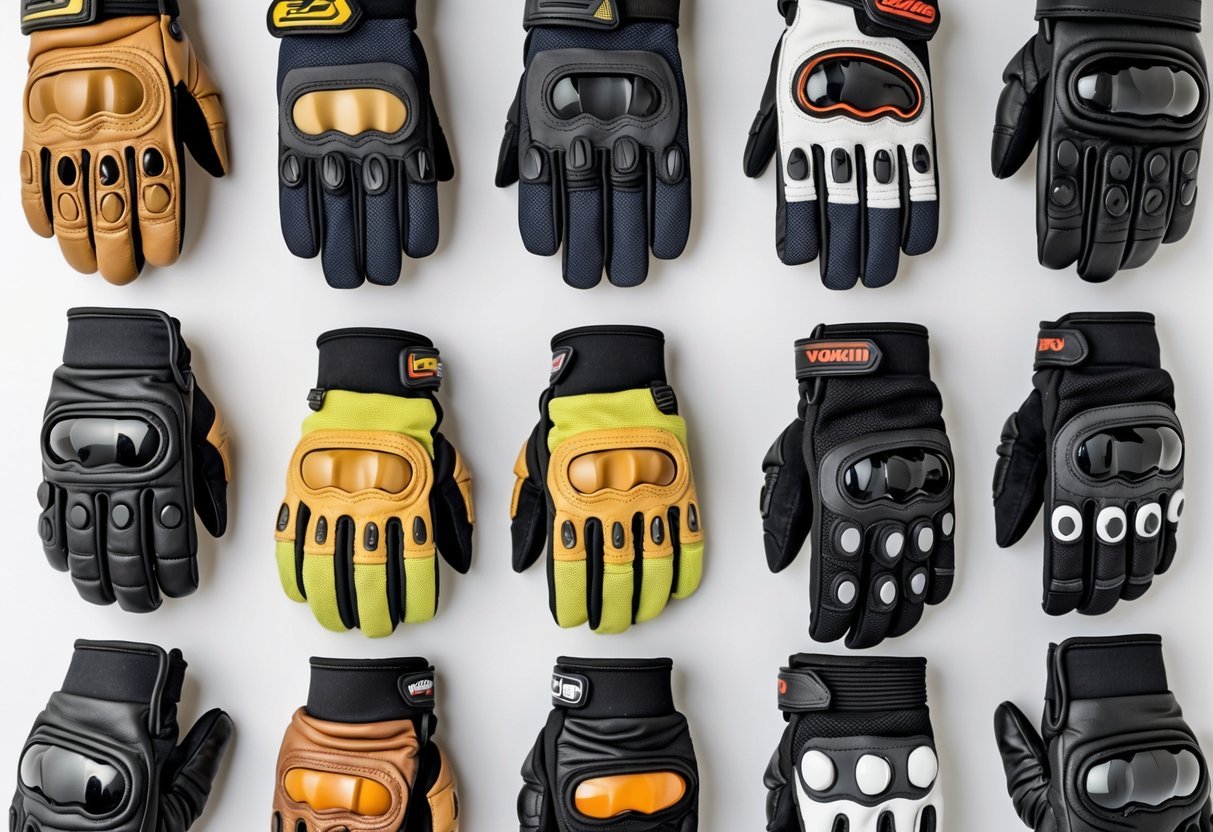
Motorcycle gloves protect a rider’s hands from injury during falls and improve grip on the handlebars. They also shield hands from wind, rain, and cold weather, which can affect control and comfort.
There are many types of motorcycle gloves, each suited for different riding styles and conditions. Sport gloves focus on a snug fit and extra protection for high-speed riding. Touring gloves emphasize comfort and weather resistance for long trips.
Winter motorcycle gloves use thicker materials and insulation to keep hands warm. However, they may limit flexibility, so choosing gloves that allow good movement is important. Motocross gloves offer flexibility for off-road use, while track gloves provide aerodynamics and heat resistance.
Materials like goatskin leather are common. They provide a good balance of grip, protection, and comfort. Some gloves add padding to key areas like knuckles and palms to reduce injury risk.
Choosing the right gloves means considering the type of riding and weather conditions. Wearing proper motorcycle gloves is essential for hand safety and better bike control.
10) Tactical Gloves
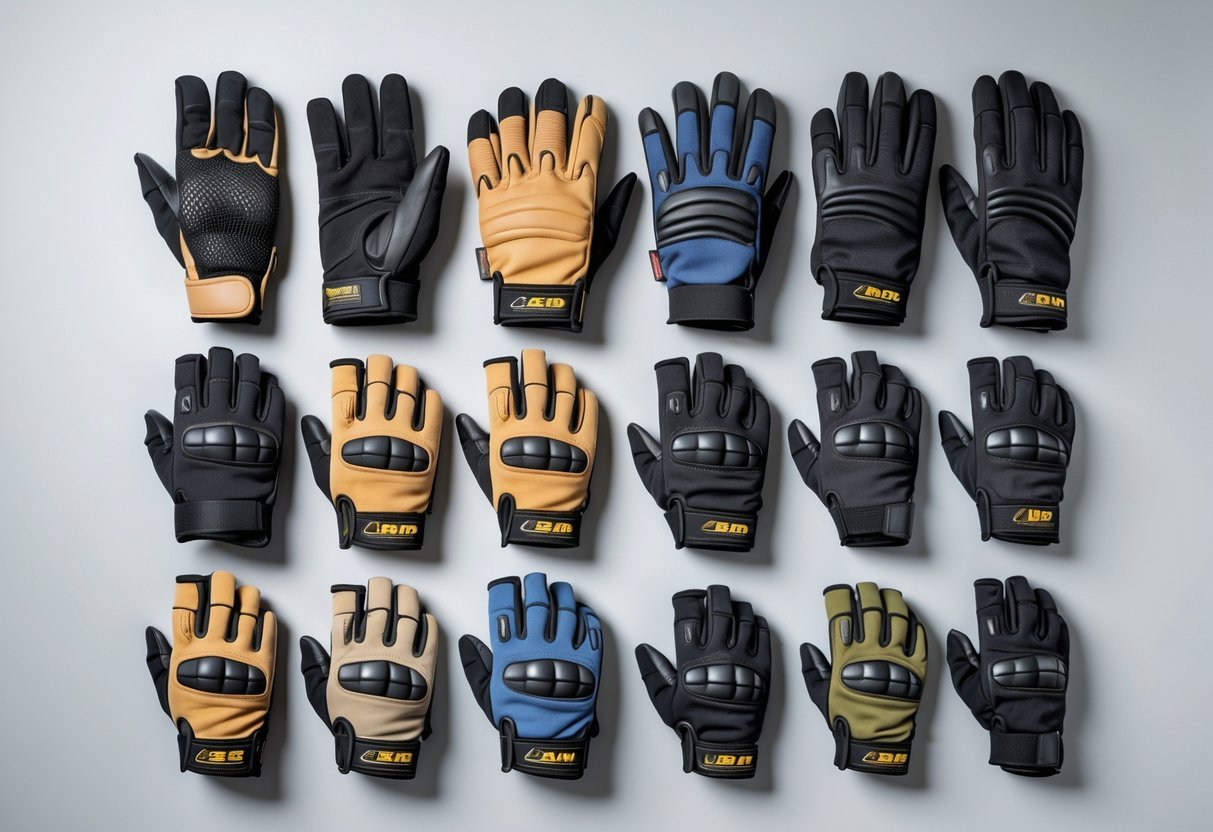
Tactical gloves are designed for use in demanding situations like military operations, law enforcement, and outdoor activities. They provide protection against impacts, abrasions, and harsh weather while maintaining hand dexterity.
These gloves come in different styles. Combat gloves have extra padding and armored knuckles for close-quarters fighting. Shooting gloves are slim with good grip and allow trigger finger freedom. Work gloves are heavier and made for handling tools or gear.
Many tactical gloves use durable materials that balance protection and flexibility. Some also have touchscreen-compatible fingertips to operate devices without removing the gloves. This makes them practical for use in the field.
Choosing the right tactical gloves depends on the user’s needs. Factors include the type of activity, climate, and level of protection required. Properly selected gloves improve grip, safety, and performance in tough conditions.
Understanding Glove Materials
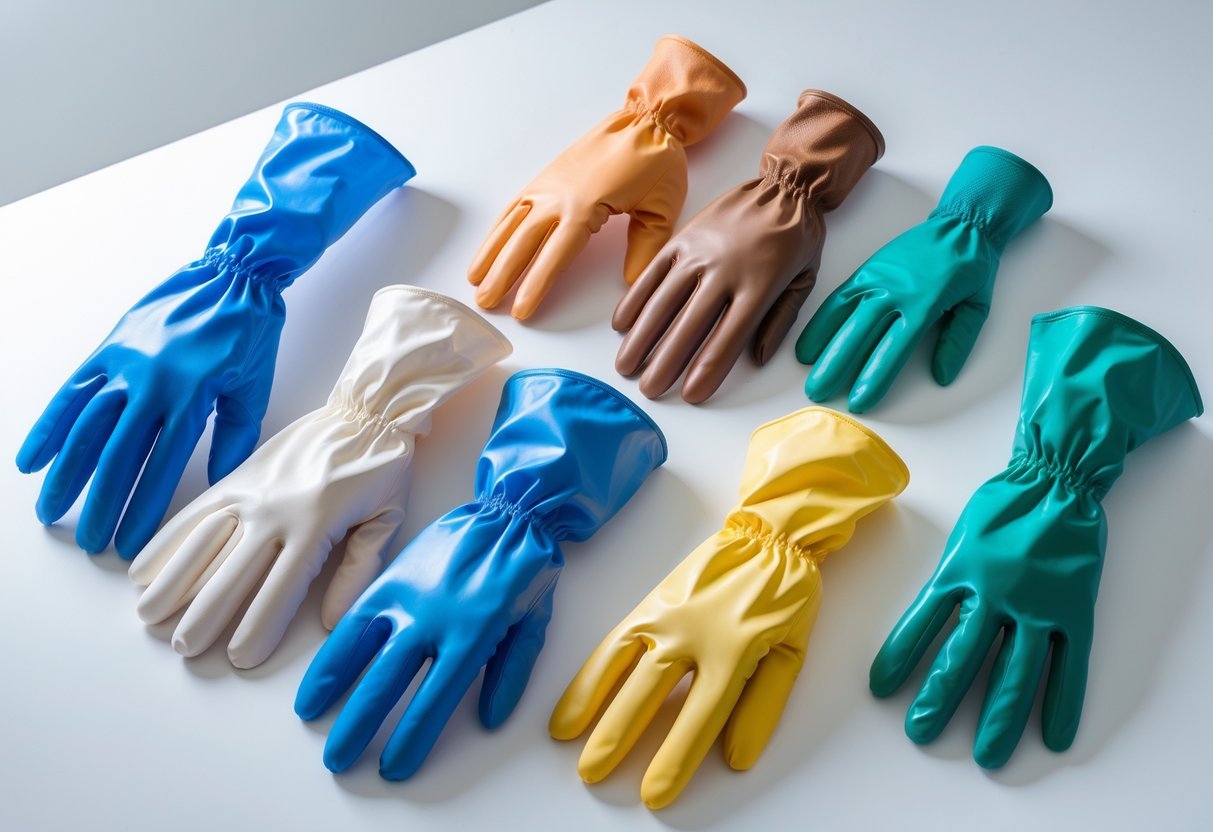
Glove materials vary widely and impact factors like comfort, durability, and safety. Different materials suit different tasks and environments based on their source and physical qualities.
Natural vs Synthetic Fibers
Natural fibers come from animal or plant sources. Common natural materials include latex and leather. Latex gloves offer flexibility and fit but can cause allergies in some users. Leather gloves are durable, breathable, and provide good protection against abrasion. Types of leather such as cowhide and goatskin each have unique features; cowhide is tough while goatskin is soft and flexible.
Synthetic fibers include nitrile, vinyl, and polyethylene. Nitrile gloves resist chemicals, punctures, and provide a good fit, making them popular in medical and industrial use. Vinyl gloves are less durable and looser but are cost-effective for short tasks. Polyethylene gloves are less sturdy but useful where quick changes and cleanliness matter.
Breathability and Protection
Breathability affects glove comfort, especially for long use. Leather and some natural fibers allow air flow to reduce sweating. Synthetic gloves like nitrile and vinyl are less breathable but offer better resistance to chemicals, oils, and fluids.
Protection depends on the material’s strength and flexibility. Latex and nitrile provide good tactile sensitivity and barrier protection from bacteria and chemicals. Leather gloves offer physical protection but are not effective against fluids. Vinyl and polyethylene offer barrier protection mostly in low-risk settings but tear more easily.
| Material | Breathability | Protection Level | Typical Use |
|---|---|---|---|
| Latex | Moderate | High (biological and chemical) | Medical, laboratory |
| Leather | High | High (abrasion, physical) | Construction, heavy labor |
| Nitrile | Low | High (chemical, puncture) | Healthcare, industrial |
| Vinyl | Low | Moderate (low-risk tasks) | Food handling, cleaning |
| Polyethylene | Low | Moderate (cleanliness) | Food service, brief tasks |
Proper Glove Care and Maintenance

Proper care keeps gloves effective and lasts longer. Cleaning and storing gloves correctly stops damage and preserves their protective qualities and comfort.
Cleaning Recommendations
Gloves should be cleaned based on their material. Leather gloves need gentle cleaning with a damp cloth and mild soap. Avoid soaking them, as water can cause stiffness or cracking.
Fabric or cotton gloves can usually be washed with mild detergent and warm water. It’s important to rinse well and air dry to prevent shrinking or damage.
For cut-resistant or disposable gloves, cleaning often isn’t recommended. Instead, these gloves should be replaced if damaged or soiled.
Always check the manufacturer’s instructions before cleaning. Improper cleaning can reduce protection or shorten glove life.
Storage Best Practices
Gloves should be stored in a dry, cool area away from sunlight. Heat and moisture break down materials faster.
Keep gloves flat or lightly folded to avoid creasing that weakens fibers. Avoid heavy objects on top of gloves that might deform them.
For multiple pairs, use rotation to extend life. Regularly inspect gloves for tears, holes, or wear before storing.
Proper storage helps maintain glove shape, flexibility, and protection. It also keeps them ready for safe use at any time.
Frequently Asked Questions
Gloves vary by material, size, and purpose, which affects their use in different settings. Knowing how to choose the right gloves depends on understanding these differences alongside safety standards and environmental needs.
What are the key differences between nitrile, latex, and vinyl gloves?
Latex gloves are flexible and offer good protection but can cause allergies for some people. Nitrile gloves are more resistant to chemicals and punctures and are a good alternative to latex. Vinyl gloves are less durable and fit loosely but are inexpensive and suitable for short-term tasks.
How do you determine the appropriate glove size for your hands?
Glove size is based on the circumference of the dominant hand around the palm, excluding the thumb. Measuring with a tape and comparing to size charts helps find a snug but comfortable fit. Proper sizing prevents slipping and ensures better dexterity.
Which glove materials are best suited for medical environments?
Nitrile and latex gloves are commonly used in medical settings. Nitrile is preferred due to its chemical resistance and low allergy risk. Latex offers excellent fit and touch sensitivity but may not be suitable for people with latex allergies.
What are the best types of gloves for handling chemicals?
Nitrile gloves are often the best choice for handling most chemicals due to their strong resistance. Chemical-resistant gloves can also be made from neoprene or butyl rubber for specific substances. Selecting gloves depends on the type and concentration of the chemical.
How can you identify if a glove is food-safe and meets FDA guidelines?
Food-safe gloves are made from materials approved by the FDA, such as certain types of vinyl, nitrile, or latex. They are labeled as food-grade and must comply with hygiene and safety standards. Checking packaging and certifications ensures compliance.
What factors should be considered when selecting gloves for cold weather conditions?
Gloves for cold weather should provide insulation and protect from moisture. Materials like leather with thermal lining or insulated synthetic gloves work well. It is important to balance warmth with dexterity needed for tasks.






